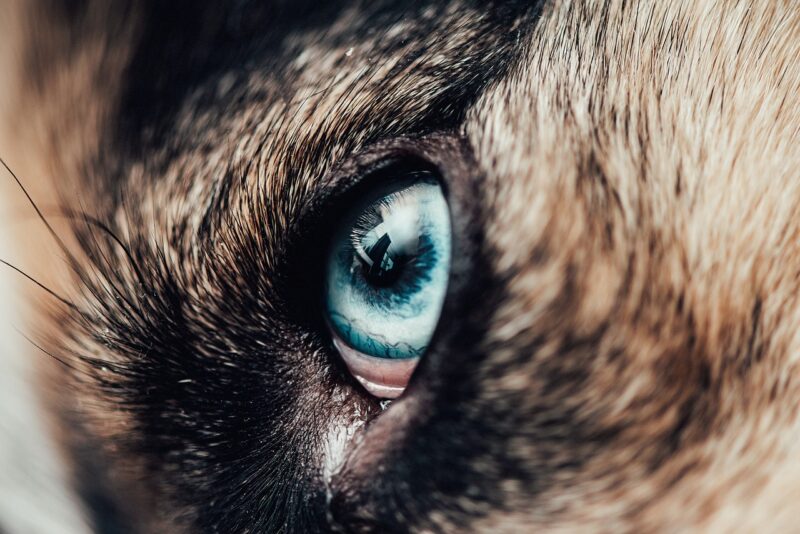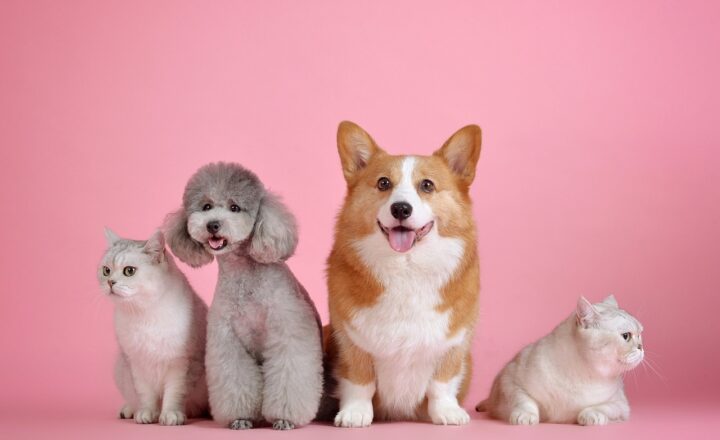How Dogs Communicate with Their Eyes: Reading the Emotions of Man’s Best Friend
November 13, 2024

Dogs are often referred to as “man’s best friend,” and for good reason. They have an incredible ability to bond with humans and convey their emotions in unique ways. One of the most intriguing aspects of this communication is how they use their eyes. Understanding canine eye communication can help strengthen the connection between you and your furry companion.
1. The Anatomy of a Dog’s Eye
Before diving into the nuances of eye communication, it’s important to understand the anatomy of a dog’s eye. Unlike humans, dogs have a more limited color spectrum but a superior ability to detect motion. Their eyes are also equipped with a reflective layer called the “tapetum lucidum,” which enhances their night vision. This biological feature aids in how they perceive their environment, and in their ability to communicate emotional states to their owners.
2. Understanding Dog Eye Communication
Dog eye communication is multifaceted. The eyes can express a range of emotions—from joy and excitement to fear and anxiety. Here are some key indicators to look out for:
- Soft Eyes: When a dog’s eyes appear soft and relaxed, it generally indicates comfort and affection. This is commonly seen when your dog is calm, such as when you are relaxing together on the couch.
- Wide Eyes: A dog with wide-open eyes may be excited, alert, or even frightened. It’s essential to understand the context of the situation—if your dog is at play, this could indicate excitement. However, if they’re staring at something unfamiliar, it may be a sign of tension or fear.
- Slow Blinking: Dogs often communicate trust and love through slow blinking. If your dog looks at you and slowly blinks, it’s a sign of affection. This behavior can even be reciprocated by humans to convey similar feelings of trust.
- Narrowed Eyes: If a dog narrows their eyes, it can indicate discomfort or stress. This may occur in tense situations or when they sense danger. Pay attention to body posture as well; a stiff posture alongside narrowed eyes could signal fear or aggression.
Understanding these signals can greatly improve how you respond to your dog’s emotional state, fostering a deeper bond.
3. Eye Contact: The Bridge of Connection
Eye contact can serve as a form of unspoken communication between dogs and their owners. While prolonged eye contact in humans can indicate confrontation, in the canine world, it often serves to reinforce bonds. Here are a few things to keep in mind:
- When your dog maintains eye contact, it is often a display of trust and affection. This behavior strengthens your relationship, promoting loyalty and security.
- In contrast, prolonged, unbroken eye contact may lead to discomfort. If your dog seems anxious while maintaining eye contact, consider redirecting their attention or providing a calming environment.
Important note: Eye contact should always be a balance; you want to encourage trust without overwhelming your pet.
4. The Role of Environment in Eye Communication
A dog’s environment will heavily influence their emotions, thus impacting how they use their eyes to communicate. Factors can include:
- Different People: How your dog perceives various people may change their eye behavior. For example, a familiar individual may elicit soft eyes, while a stranger may provoke wide, alert eyes.
- New Places: A change in scenery, such as visiting a park or attending a dog-friendly event, can lead to excitement (wide eyes) or anxiety (narrowed eyes). Cues from other dogs in the vicinity may also play a role in how your dog reacts.
Recognizing the context creates a richer understanding of how your dog feels and what they want to communicate.
5. Training your Dog to Respond to Eye Signals
As responsible pet owners, it is crucial to train your dogs to read and respond to eye signals effectively. Here are some training tips:
- Use Treats as Rewards: Whenever your dog displays the desired eye behavior (such as slow blinking or maintaining soft eyes), reward them with treats and praise.
- Practice Together: Create scenarios that require your dog to look at you or shift their focus based on eye cues. This can help them become more attuned to your signals.
- Be Patient: Training takes time, so use positive reinforcement over time to build a stronger connection and understanding.
When well-trained, your dog will be more responsive to your commands and eye signals, further enhancing communication.
6. Signs of Miscommunication: What to Watch For
Despite our best efforts, miscommunication can happen. Signs that your dog may not be feeling understood can include:
- Looking Away: If your dog frequently looks away or seems disinterested in eye contact, this could be a signal of discomfort or disconnection.
- Changes in Behavior: Sudden changes in behavior—such as increased barking, pacing, or withdrawal—can indicate that your dog is trying to communicate stress or anxiety.
Fostering understanding in these moments is essential. Paying careful attention to your dog’s body language and other cues can help prevent deeper issues and reinforce bonds.
Conclusion: Building a Deeper Bond with Your Dog
Understanding how dogs communicate with their eyes provides a valuable insight into their emotional world. With practice and attentiveness, you can strengthen your bond with your furry friend, allowing for a deep, fulfilling partnership. Recognizing soft eyes versus wide eyes, engaging in eye contact, and being mindful of your dog’s environment will pave the way for effective communication.
In return, your dog will become more responsive to your commands and emotions, creating a harmonious relationship built on mutual understanding. Train, observe, and cherish this remarkable bond with man’s best friend.
Feel free to reach out to your veterinarian or canine behaviorist for additional resources or techniques to further enhance communication with your dog. Together, you can ensure a happy, fulfilling life as partners in this journey.






